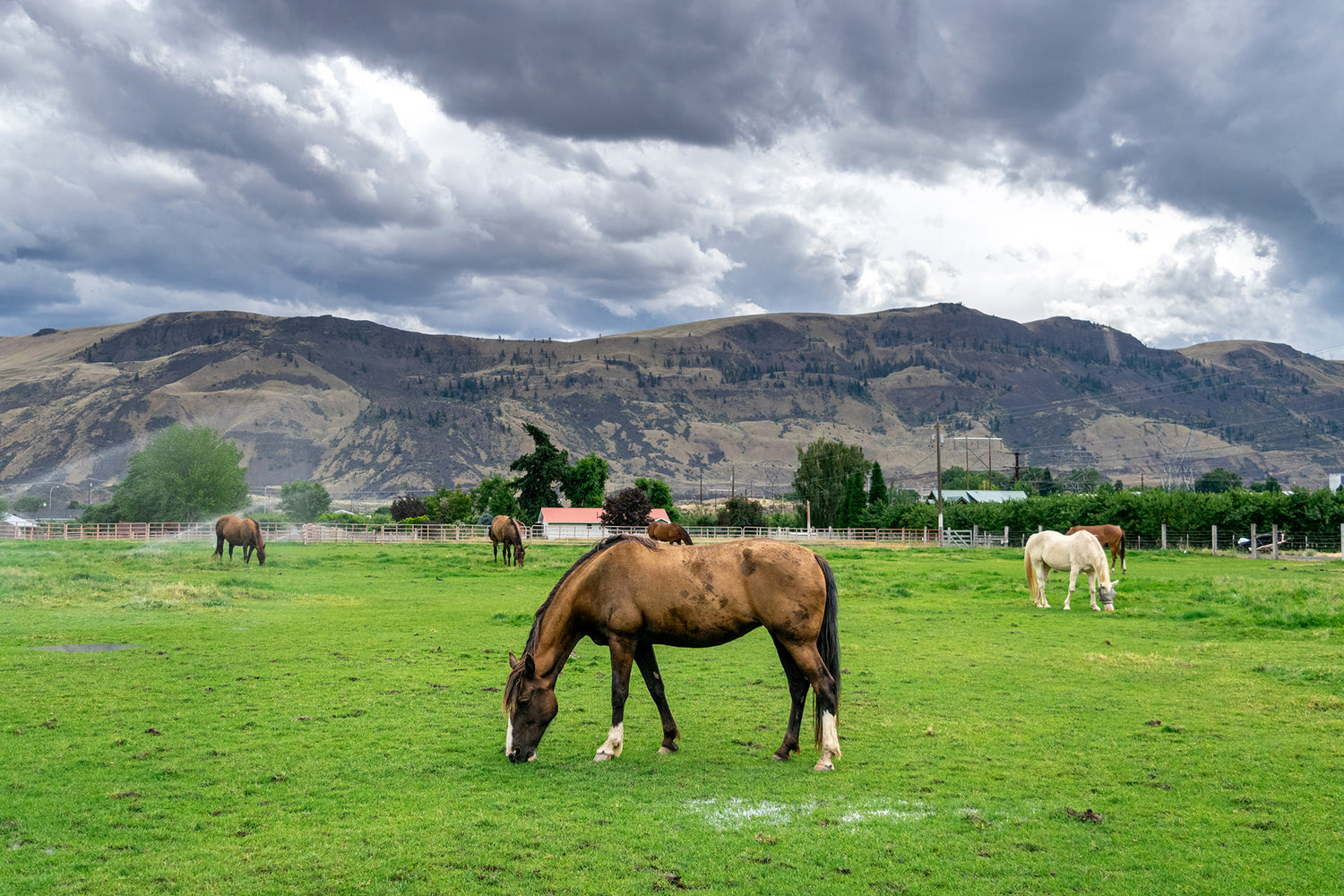Step-By-Step Pasture Planting Guide
Whether you are replanting a pasture or establishing a new pasture, developing a solid planting plan is key. Skipping to planting without proper planning, seed selection, and field preparation is inadvisable and often ineffective.
Instead, follow the steps below to achieve success in planting your pastureland:
Steps for Planting Your Pasture
Plan Your Planting Season
You can plant pasture in either the spring or the fall, but be mindful of the following:
Spring Planting
Plant as early as possible in spring or when temperatures are consistently between 45-75 degrees F. Freezing or colder temperatures should not harm the seed or the young seedlings, but may slow the germination or initial growth by a few days or weeks
Fall Planting
As a general rule, seeding should be completed from 6-8 weeks before the traditional first frost to ensure that seedlings are established enough going into winter (August - September) or after temperatures are consistently below 60 degrees F (late October - early November) to dormant seed and prevent germination until the following spring when temperatures warm up.
Prepare Your Site
Before planting, remove or kill existing vegetation from the planting site with a non-selective herbicide such as Round-Up. Once the vegetation has been killed, remove the un-wanted vegetation using whatever methods are best suited for your site.
1. Till the site to a depth of 4-6"
2. Level and firm the area with a harrow to ensure a firm seedbed. If the soil is too fluffy, it will not retain moisture and seeding will not be as successful. Contact your country extension or local farm store for recommended starter fertilizer based on what is being planted, pH and other considerations.
3. Roll and water the area (if possible) to settle the soil
Seed Your Pasture
Apply seed at the recommended rate for the area and type of hay/pasture you are establishing. Irrigated, dryland, etc.
1. Aim for optimal weather conditions - If you are seeding when it is too windy or hot you may have a complete failure. Seed early in the spring as soon as you can get on the ground. Ideally, prepare the ground for seeding prior to the onset of good seeding conditions.
2. Broadcast using the rate recommended - Typically, a broadcasted seeding rate is double the rate of drilling. Once broadcasted you should roll, harrow, or press the seed into the soil ensuring good seed to soil contact. A spring-tooth harrow, chain link fencing, heavy chain or other should be dragged to lightly cover the seed with soil, approximately 1/8" - 1/4". DO NOT sow the seed too deeply.
3. Drill the seed at a shallow depth 1/8" - 1/4" and use the recommended seeding rate. Using rollers, press the seed firmly into the soil. DO NOT sow the seed too deeply!
Water
Keep the seed bed moist for 45 to 60 days, allowing the plants to completely germinate and begin their establishment.
NOTE: Non-irrigated land/dryland - sow the seed early enough in the spring to take advantage of spring moisture. Seeding dryland in late May or early June is too late unless you have the means to supplement moisture. If you missed the spring seeding timeframe, we recommend waiting and seeding in the fall.
General Steps
* Keep ground moist during the initial germination stage. Keep daily watering, as needed, until the pasture grasses have reached the 2nd-3rd leaf stage.
* After the pasture has established and is growing for 60 days, a deep watering will promote a deeper root system, making plants more tolerant to grazing pressure and drought tolerant.
Fertilize
For a faster establishment and a healthier pasture, fertilize every 4-6 weeks after planting. A spring and fall fertilization should be a part of your pasture management practices.
WAIT!
Keep livestock off a new pasture for one year. This will allow the plants to fully establish and develop a strong root structure to prevent the plants from being pulled out.
* Hay your field when most of the plants are headed out. Once headed out, the plant puts nutrients into the seed head and the nutrient value of the stems and leaves starts to decline. Cut at the correct height since cutting too low will increase the recovery time of the plant which will decrease the productivity of the field.
* Same holds true for grazing. Manage your animals to ensure they are not grazing the plants too short. You typically want to only graze plants down to 4-6" before moving livestock off that pasture. Good management practices and rotational grazing will increase productivity and pasture lifespan.
A Note on Weed Control
Be aware that weed seed is present in the soil before you begin your pasture project. If weeds sprout in your new pasture, wait 45 days before applying a weed killer (consult your county extension/farm store for recommended herbicide) as new plants are easily killed by a pre-mature application of herbicide. Follow the written directions on the herbicide.

